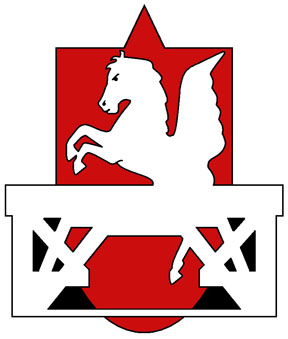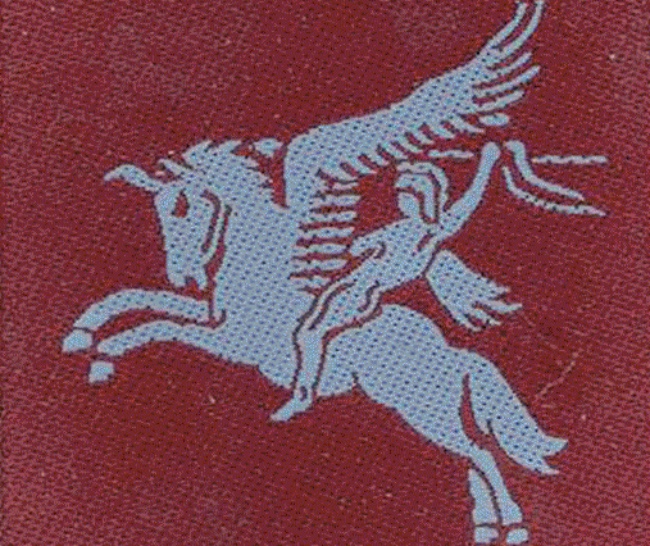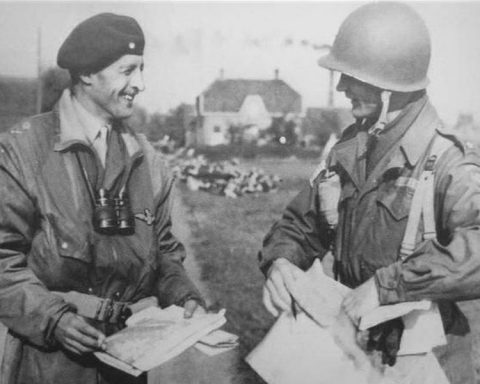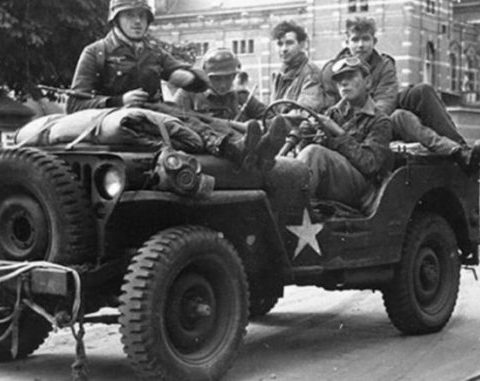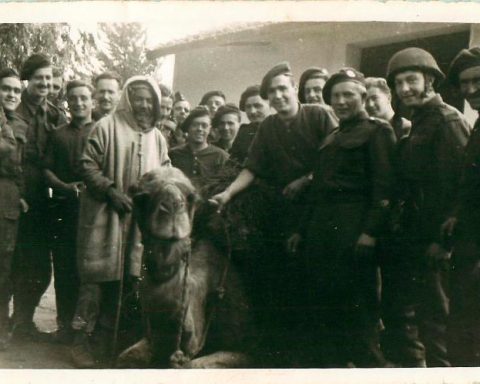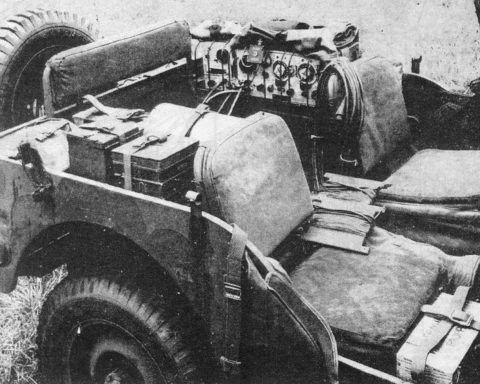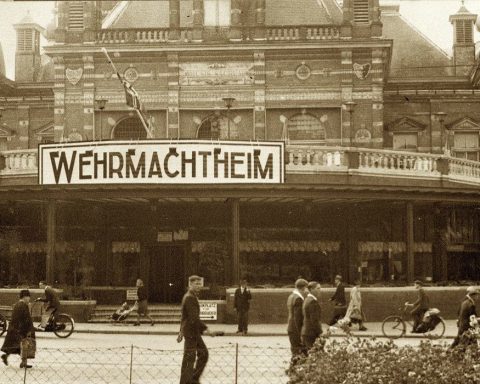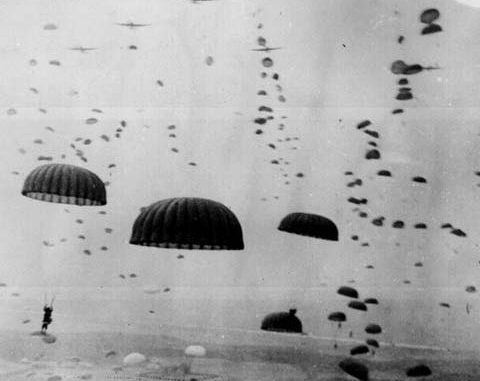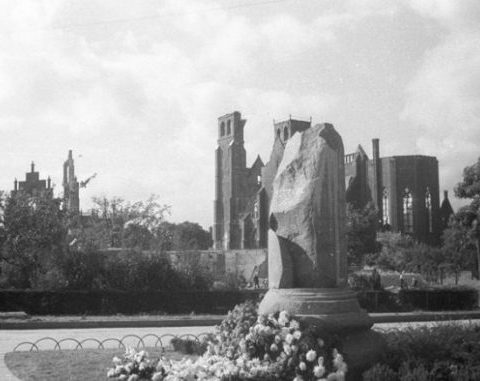The British 1st Airborne Division that was dropped during Operation Market Garden in Arnhem and surroundings, had the winged horse Pegasus as its logo. The soldiers of the 1st British Airborne Division were identified by the logo of the light blue Pegasus on a chestnut-red ‘maroon’ background on their uniform.
In addition, the soldiers of the 1st Airborne Division were recognizable by their chestnut red berets. Both the berets and the logo of the airborne division date from the early days of the British airborne division in 1941.
After the deployment of Fallschirmjäger by the Germans in the Blitzkrieg of 1940, the British army was very impressed by the deployment of paratroopers. Cautious attempts were made within the British army to establish an independent unit with parachutist units themselves.
Crete
Those attempts gained momentum after thousands of German paratroopers managed to conquer Crete after weeks of hard fighting. During the conquest of Crete, the Germans had to rely on airborne troops because the sea was controlled by the British.
Ironically, the Germans saw the deployment of the Fallschirmjäger in Crete as a failure. The number of casualties among the elite troops was too great, according to the Germans, and after the airborne landings on Crete, the Germans never again deployed airborne troops on a large scale.
However, the British were convinced by the German success in Crete, and the formation of their own British airborne division was rapidly undertaken in Great Britain. General Boy Browning was appointed commander of the British ‘Parachute Troops and Airborne Troops’.
Browning was the right man in the right place to set up an airborne division. Thanks to his organizational talent and extensive network within the British army, he was able to quickly establish the core of the division.
Red berets
The new airborne troops came from other parts of the British army. The soldiers used to wear the beret of their old unit. Browning concluded that it was better for the division’s unit if the airborne division had its own beret.
The result was the well-known ‘red beret’, which was proudly worn by the soldiers of the division. It immediately distinguished them from any other unit in the military. It was immediately clear to everyone that they were dealing with an elite soldier of the British airborns.
After the beret, Browning thought, on the advice of his wife Daphne du Maurier, that the division should also have a recognizable logo of its own. Browning chose Pegasus, the winged horse from Greek mythology, ridden by the Greek warrior Bellerophon.
Major Edward Seago, a friend from Browning’s network, was approached to design the logo. Seago was a British major famous for the camouflage patterns he designed for the British army. Seago designed the Pegasus logo as we still know it today.
6th Airborne Division
In addition to the 1st Airborne Division, the British also had a second airborne division in 1944. This was the 6th Airborne Division that also used the Pegasus emblem. The 6th Airborne Division was deployed in the D-Day landings and after a successful landing captured a bridge in the Norman town of Ouistreham. The bridge was immediately known to the Allies as ‘Pegasus Bridge’.
The 1st Airborne Division was kept in reserve during D-Day and only came into action during Operation Market Garden.
Incidentally, during the D-Day landings, there was another division that used the winged horse Pegasus as its logo. That was the German 352nd Infantry Division. This division defended the airstrip at Omaha Beach.
